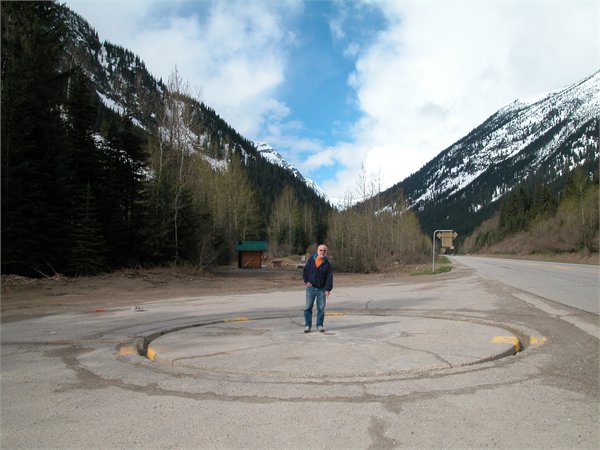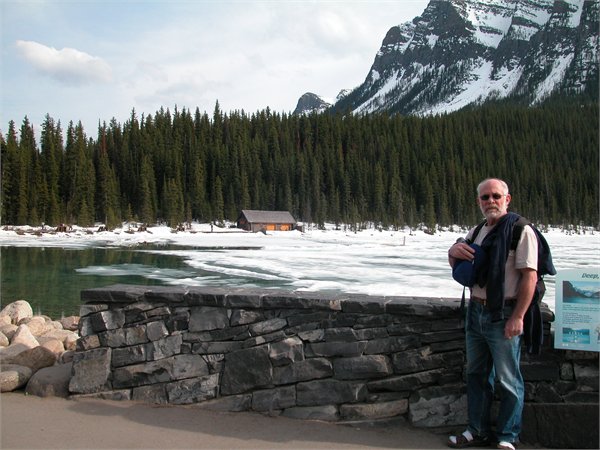During the last decade, my major studies were:
1.Developing a capacitance-based soil water content sensor (see CV, article #42) and early trials in measuring trees stems dielectrics (during a sabbatical year in HortResearch, Palmeston North, NZ).
Three legged capacitance probe: One of several variates tried out. 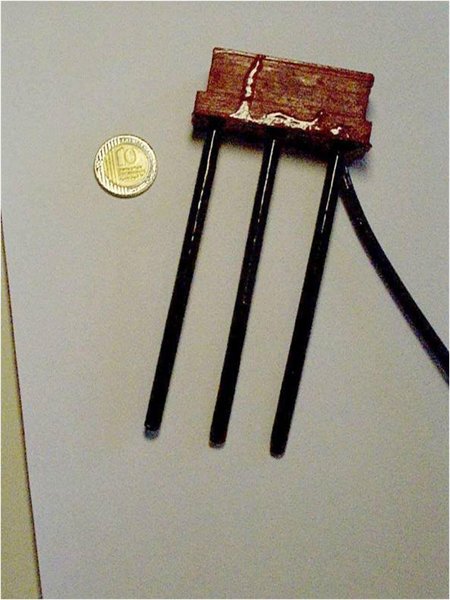
A capacitance probe installed in a Japanese mapple tree (1999, Palmerston North, New Zealand, a common project with Dr. Steve Green, during asabbatical year) 
The capacitance probe scheme of operation.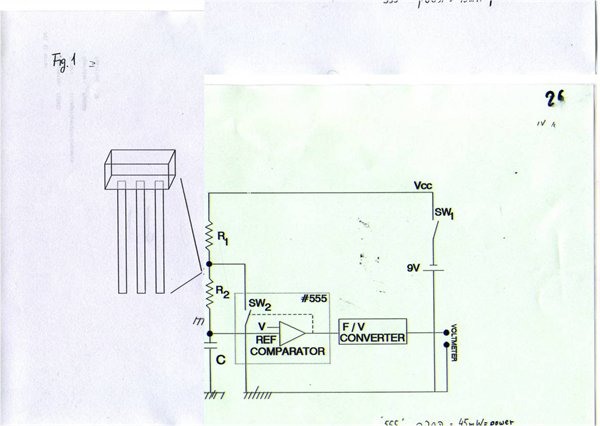
The improved stability and accuracy of stem WC over soil measurements led to the next phase.
2.Expanded and advanaced measurements of stems WC, EC, and their interrelations, in the laboratory in cut stems segments (Nadler and Tyree, 2008),and in living trees, both in lizymeters (Nadler et al., 2008) and commercial orchards (Nadler 2006, Nadler 2004).
Results of the above studies led to the quite unexpected finding where stem's EC dependence on stem WC was by far larger than on salinity in the flowing sap. This led to the next phase in which stem EC-WC relations were studied in cut segments:
A pin cherry stem segment installed with 2 TDR probes and an adaptor for leaching with different salinities under a range of pressures.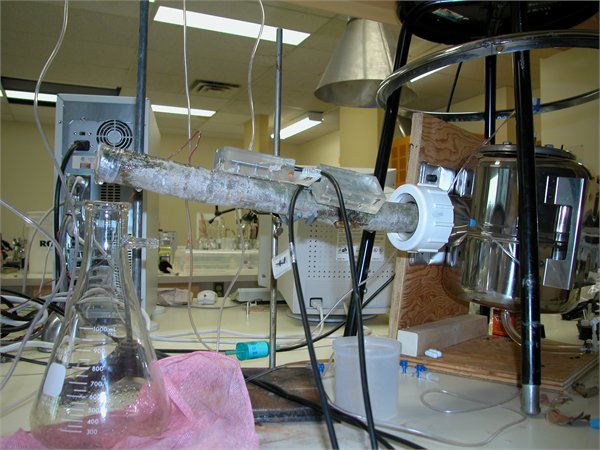
Collecting expelled water by soaking into paper 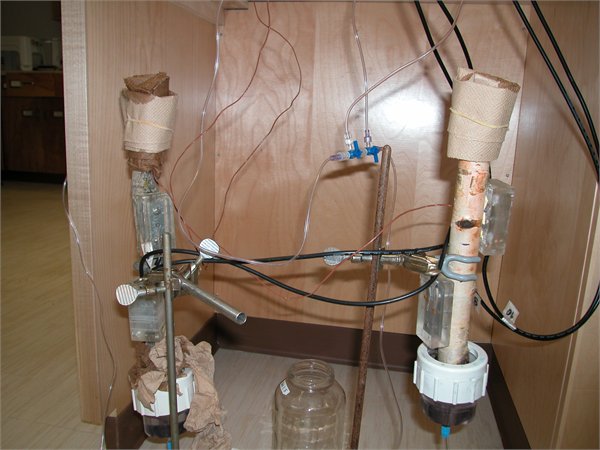
Short segment sections from the longest experimental segment, inspected after termination of experimental phase.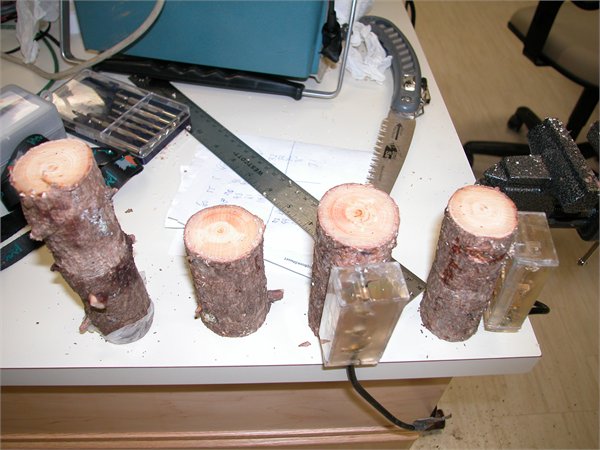
Cut throuhg halves of tested stem segments of aspen, paper birch, pin cherry and white spruce, showing the clear, unchanged tissues that were in direct contact with the probes' rods, for up to 100 days.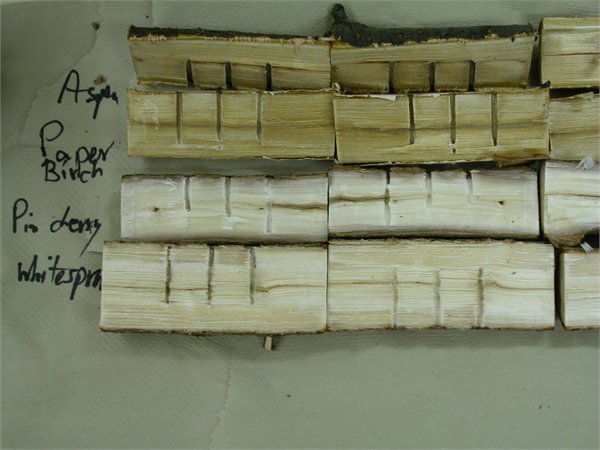
Cut throuhg halves of tested stem segments of caragana and willow showing the clear, unchanged tissues that were in direct contact with the probes' rods, for up to 100 days.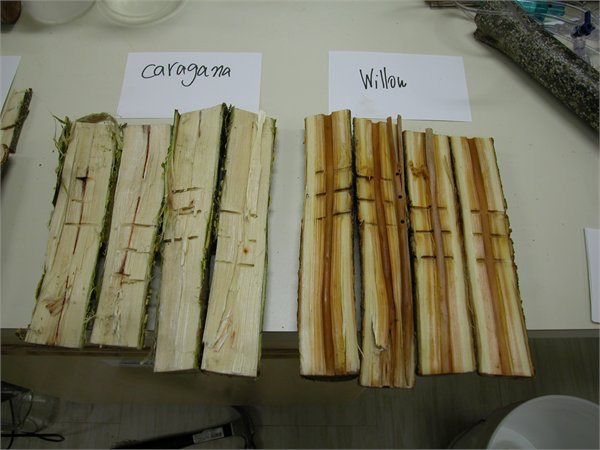
In order to verify the quantitative aspect of the TDR measurements we have compared: The air pushed sap water collected in a container, with the stem weigth loss, and calculated product of measured stem volume by the difference in WC (before and after driving out the sap fluid) as measured by the TDR probes.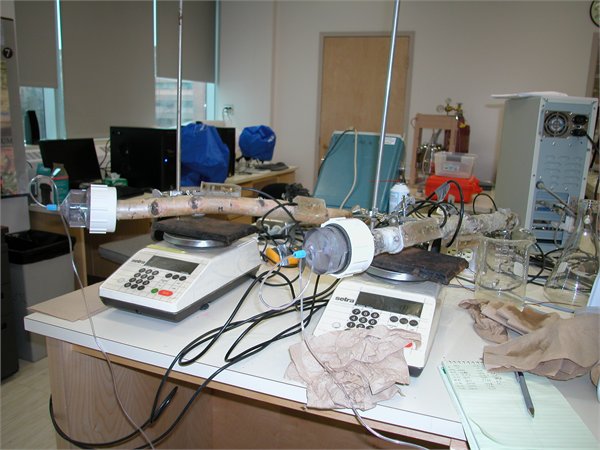
Next phase was designed to test the laboratory, stem segnmets finding this time, in living trees by monitoring trees grown in lizymeters. 200 mm long rod of TDR probes were installed in the root zone, 2/3 and 1/3 down the profile. 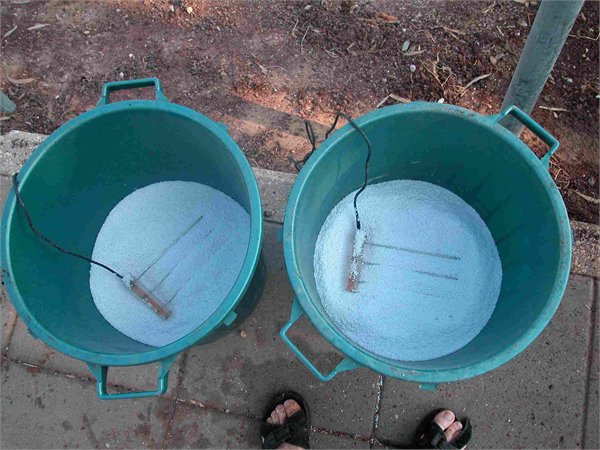
For dake of uniformity, soil traces were completely removed from tested trees roots and the trees were planted in perlite. 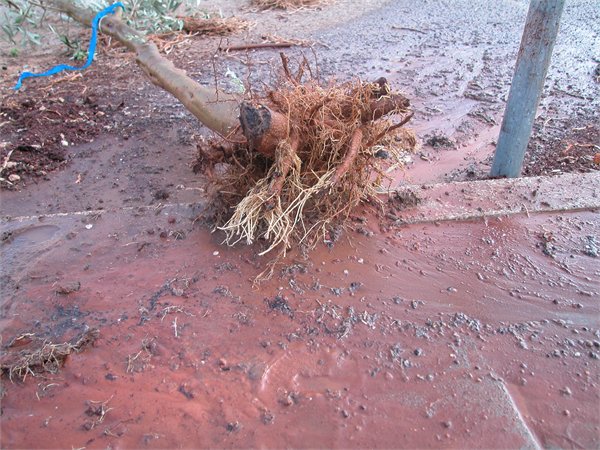
All four trees species (olive, mango, banana, and date) were installed with probes having 70 mm long rods.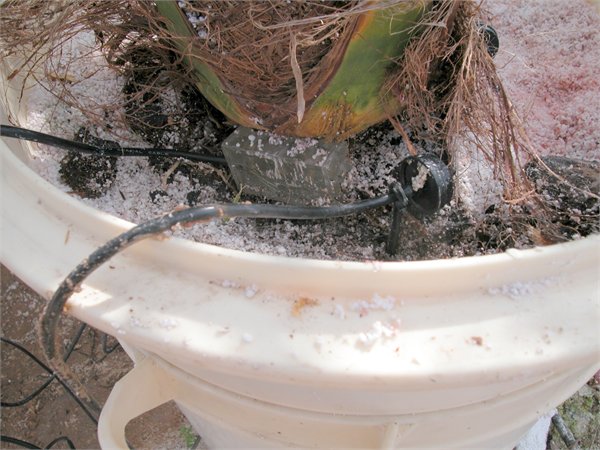
All eight trees were placed on load cells balances in order to directly obtain water amounts gained by irrigation and lost by ET.
The pictures show load cell calibration (responsibility and courtesy of Moti Barak from AgEng institute)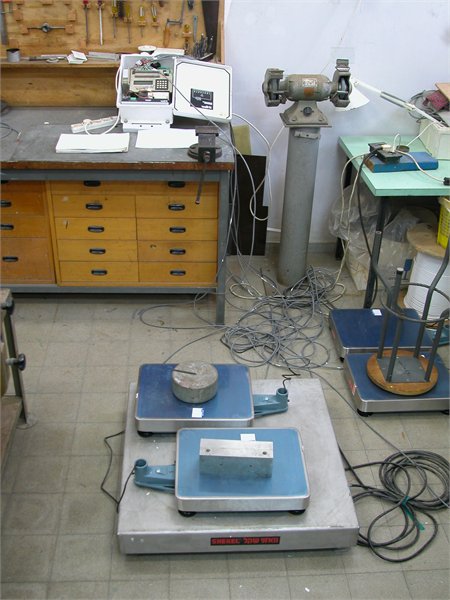
Trees were arranged on load cells, and connected to controling devices (data loger and computers.)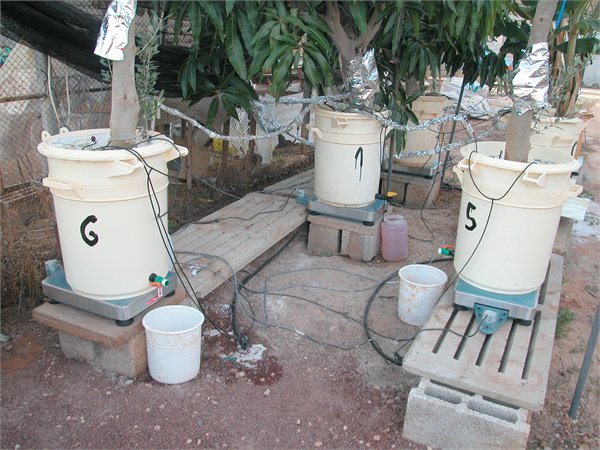
A double set up of cable tester, computer, mux and cables. On the right end side: Gamli's data loger.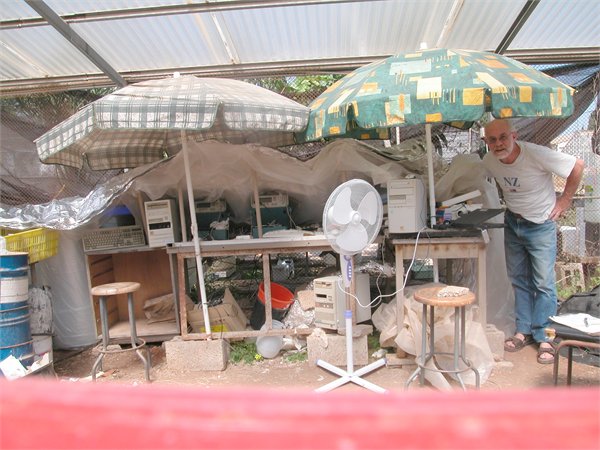
Arie in front of the experimental trees, beside a sign explaining the experiment and begging by-passers to leave the mango fruits untouched.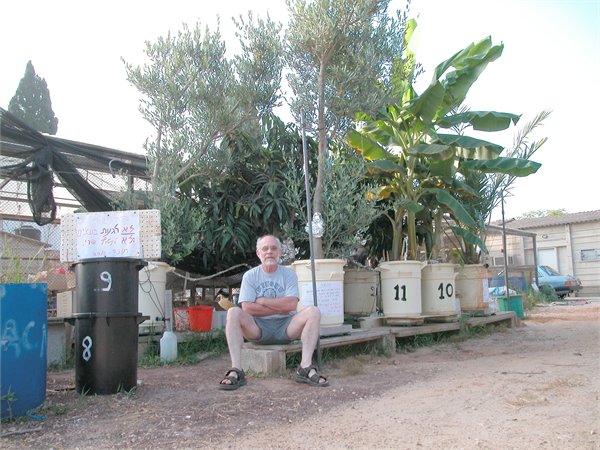
3.Currently I am undertaking two more projects:
A. In a commercial pomelo orchard where stem's WC and EC are still measured in order to verify previous findings, but maily to quantify the relations between stem's WC and EC during a daily and weekly cycles under different irrigation scheduling, during the growth epriod.
The measring equipment "protection" box, with its content exposed, in the pomelo orchard in Gilat experimental station.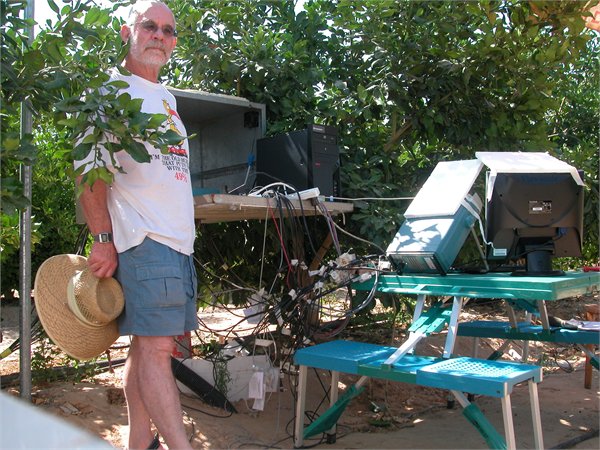
Installing 2 additional probes, one horizontal and the other vertical (above it) to verify Shmulik's Friedmann's idea regarding the significance of installation orientation.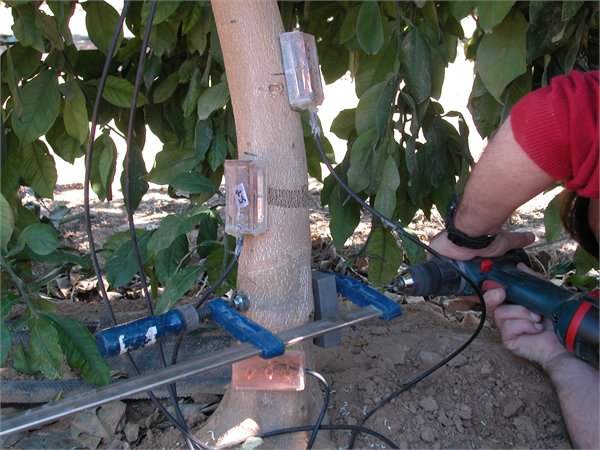
Stem probes before installation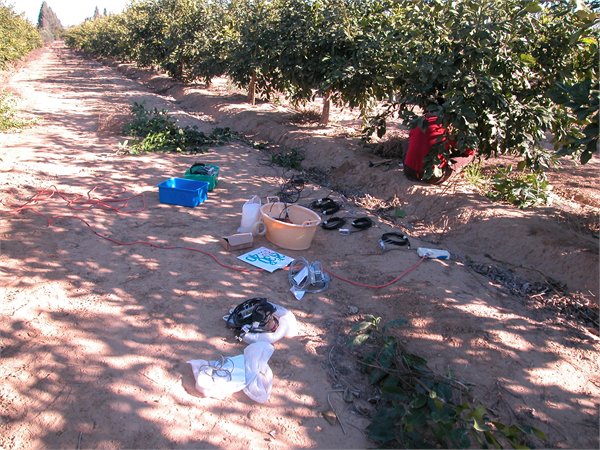
Installing soil probes and sampling soil for texture determination.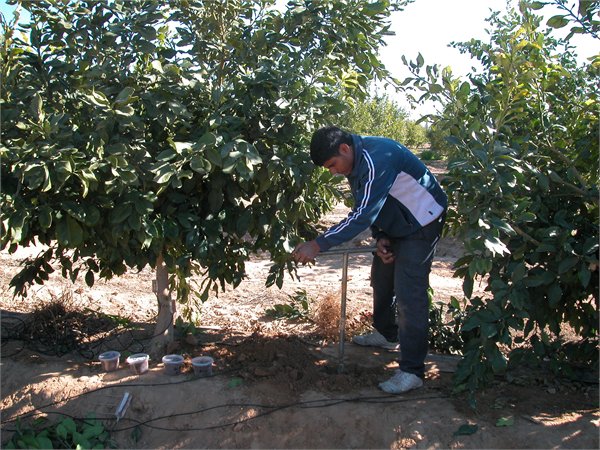
1mX1m plastic sheets used to seperate root system of trees that got different treatments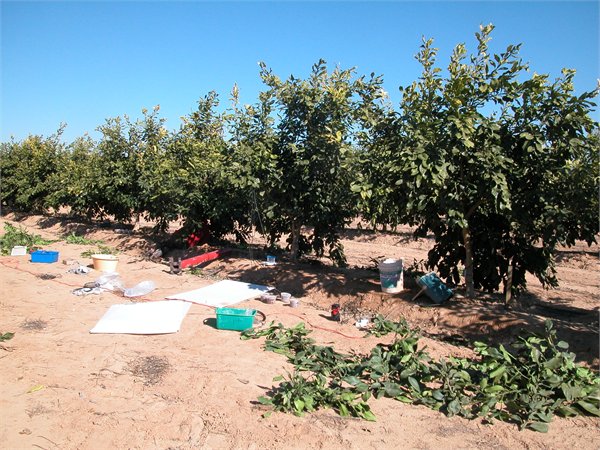
"Adjusting" Steve Green's software.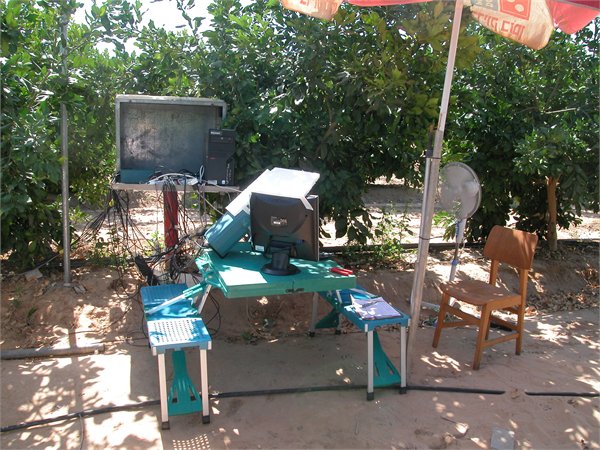
B. In a commercial clementine orchard (Beit Eliezer, 4 km east of Hadera, Israel coastal area) where (assuming the pomelo exp will produce the expected results) only stem EC is monitored in 12 trees getting 6 different irrigation treatments. Irrigation treatments are: 70%, 100%, and 120% of common practice; A single pulse a day, three pulses a day, and a single pulse under a plastic soil cover. Water input (flow meters) and soil water status (tensiometers) are monitored and results are transmitted in real time to the internet. This study is only in its preliminary stage: Stem probes were installed and the equipment was ordered.
Orchard general view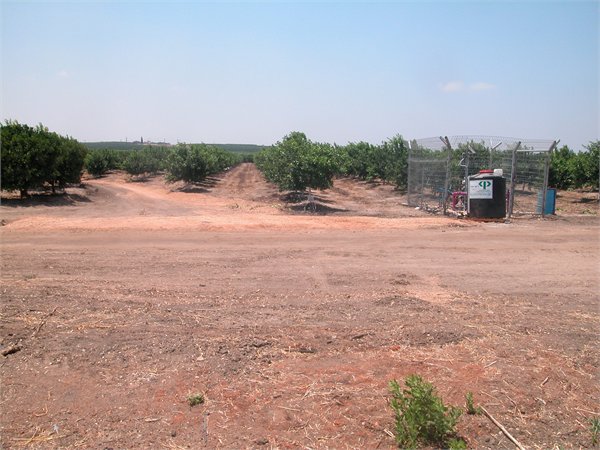
A transmitting flow meter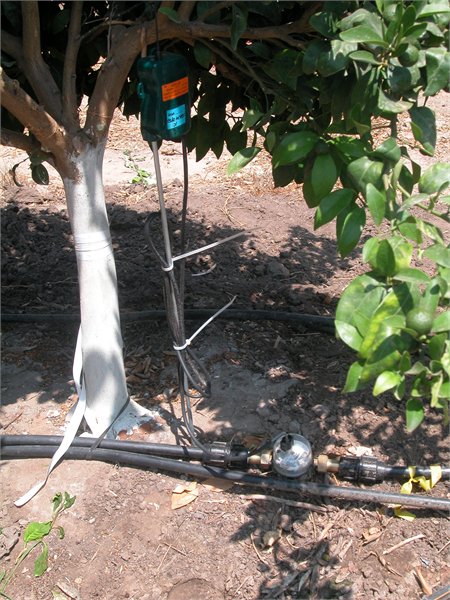
Irrigation Head 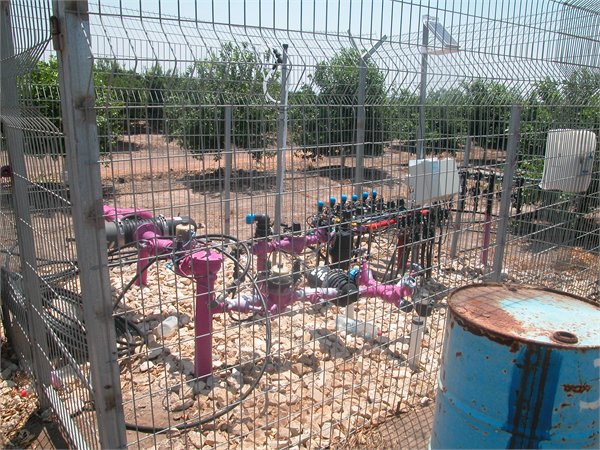
Me...pondering 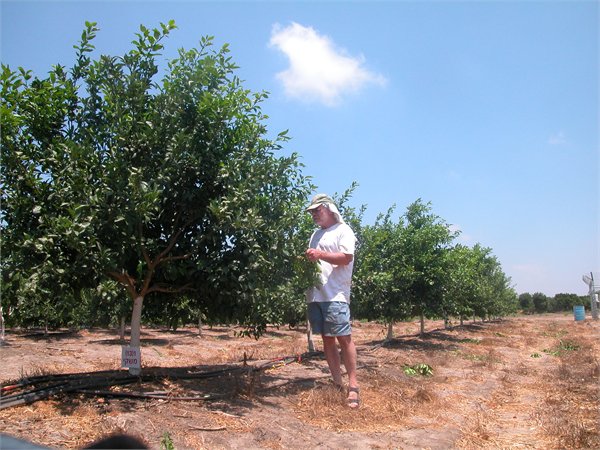
Stem installed probes. Identical to previous probes. Cable tester was used only for preliminary, quality tests. Later and routinely, only stem EC will be measured.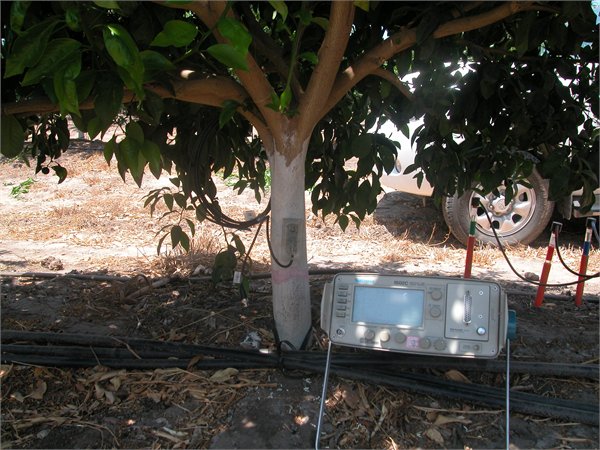
Moshe (Aharon) and Eran (Dr. Raveh) and the Toyota... 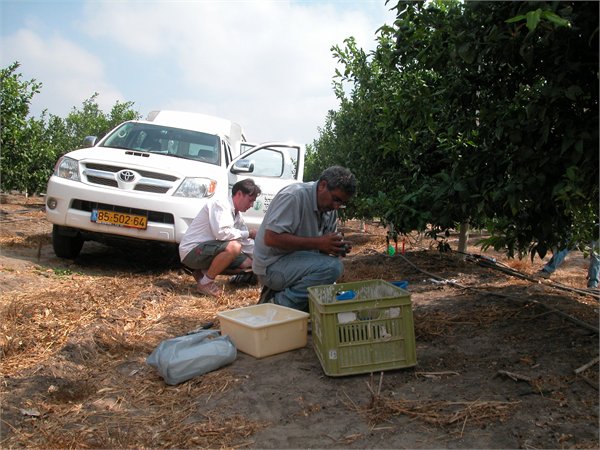
"Transmitting" tensiometers 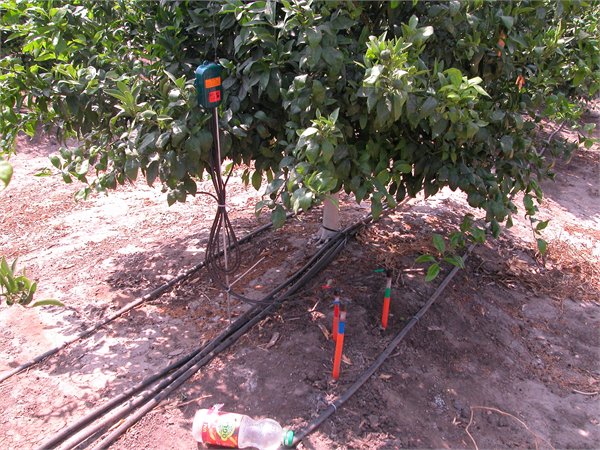
The 'Leader' (used for orientation of probe installation) is tightened to stem in the drip line cover treatment. 
Three transmitting tensiometers (20, 40 60 cm deep) in the covered drip line treatment.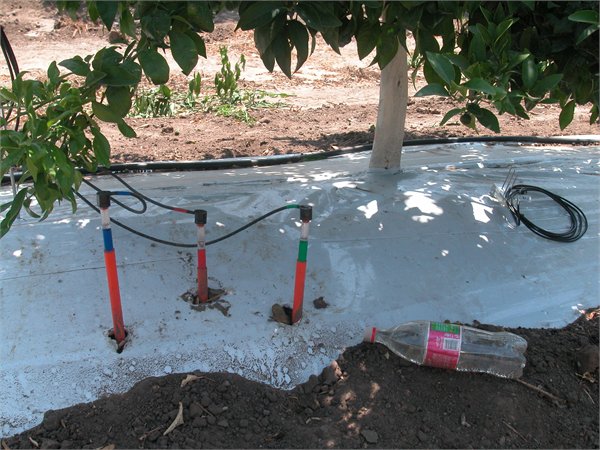
4.Two additional "side jobs" (parallel to my main line of interest) are:
A. Removal of fresh cow manure by direct application on soil surface and its effect on N nutrition, soil aggregate stabilty, and microbial acitivity.
Below, with Shuki (Dr. Joshua Miron) sampling the wheat field during harvets time.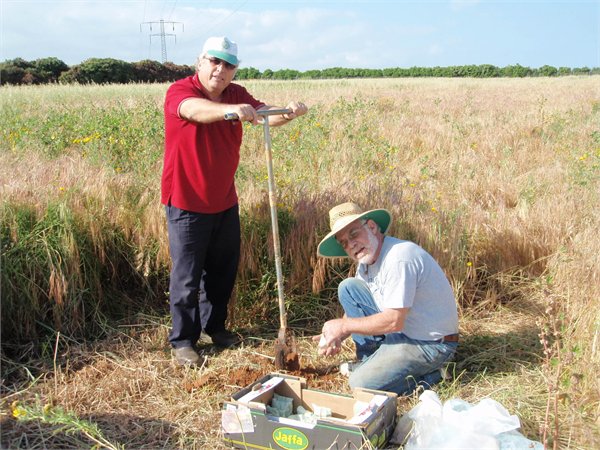
A general view of the fresh manure applied wheat field during the winter time.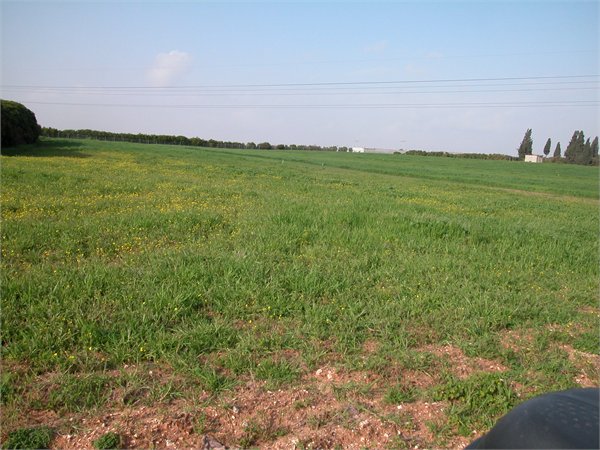
Crop in fresh manure treatment.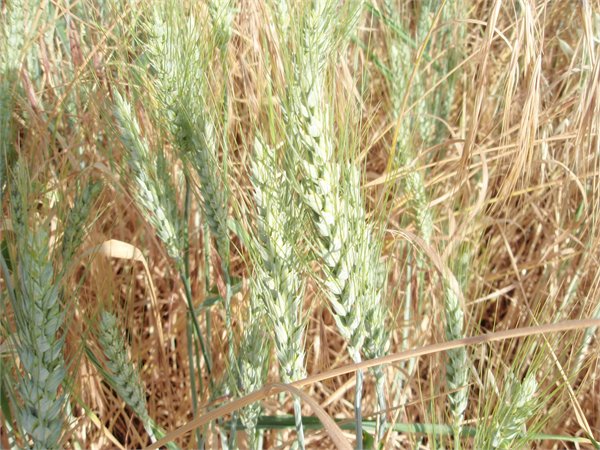
Shuki and Arie are worried about the draught.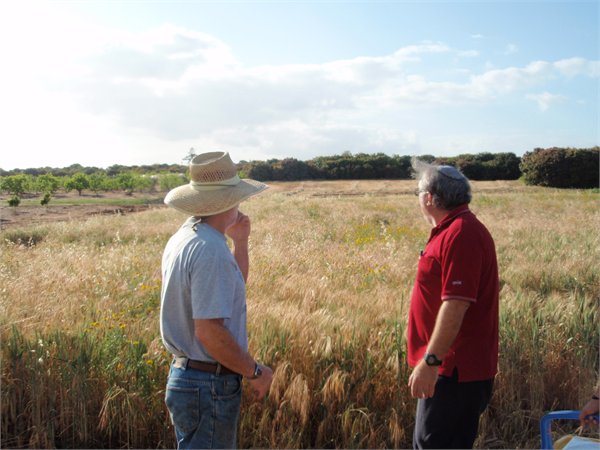
Harvest sampling.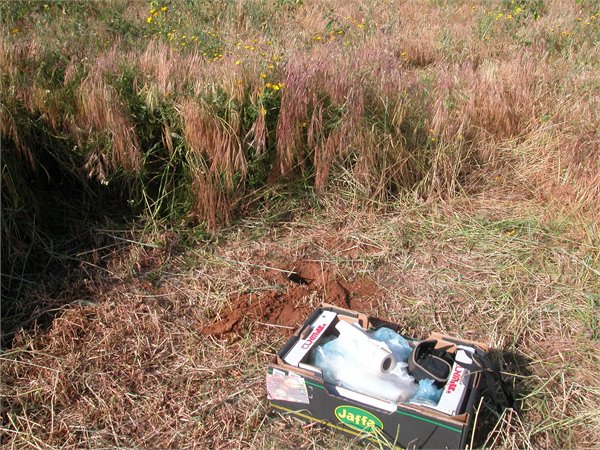
Field during winter.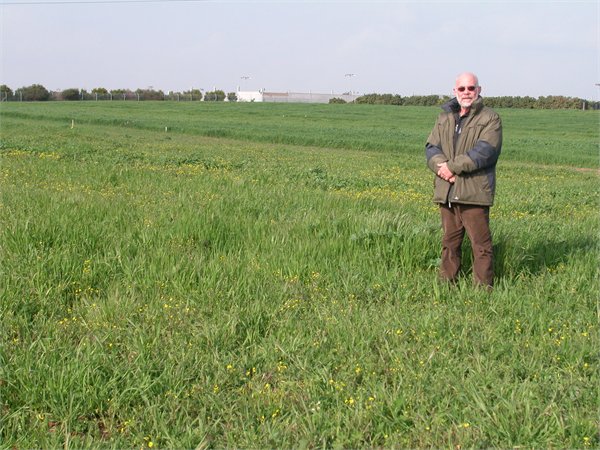
B. Cultivating my four grandchildren.
Ynabr (12.5) Omer (8.5)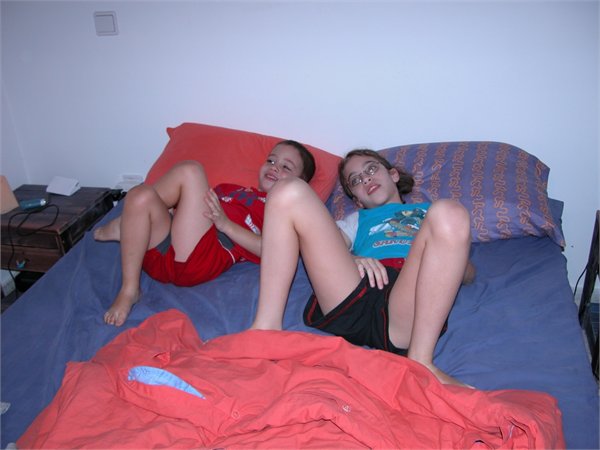
Amit (4) and Neta (almost 1)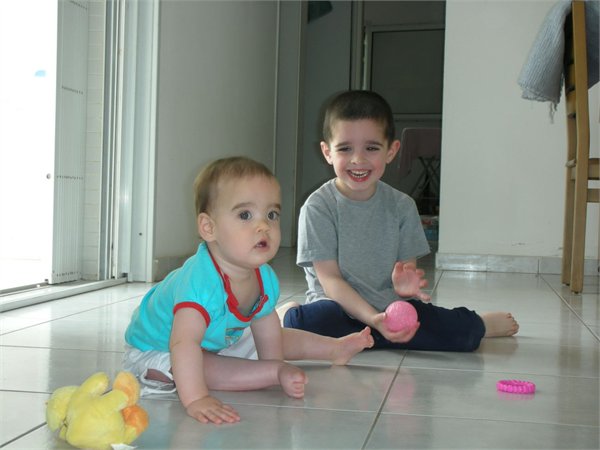
My last ever sast sabbatical was spent in UofAlberta, Edmonton, Canada, withese wonderful people who made this year wonderful period.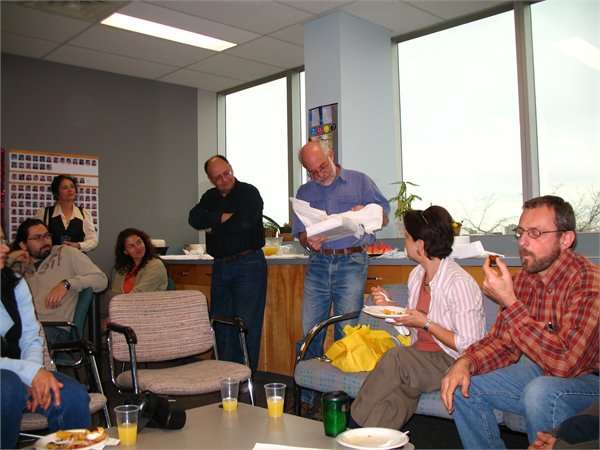
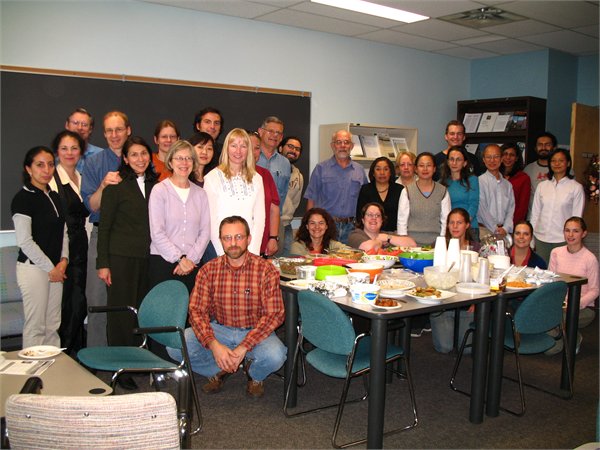
And Edmonton is close to BC with places like...